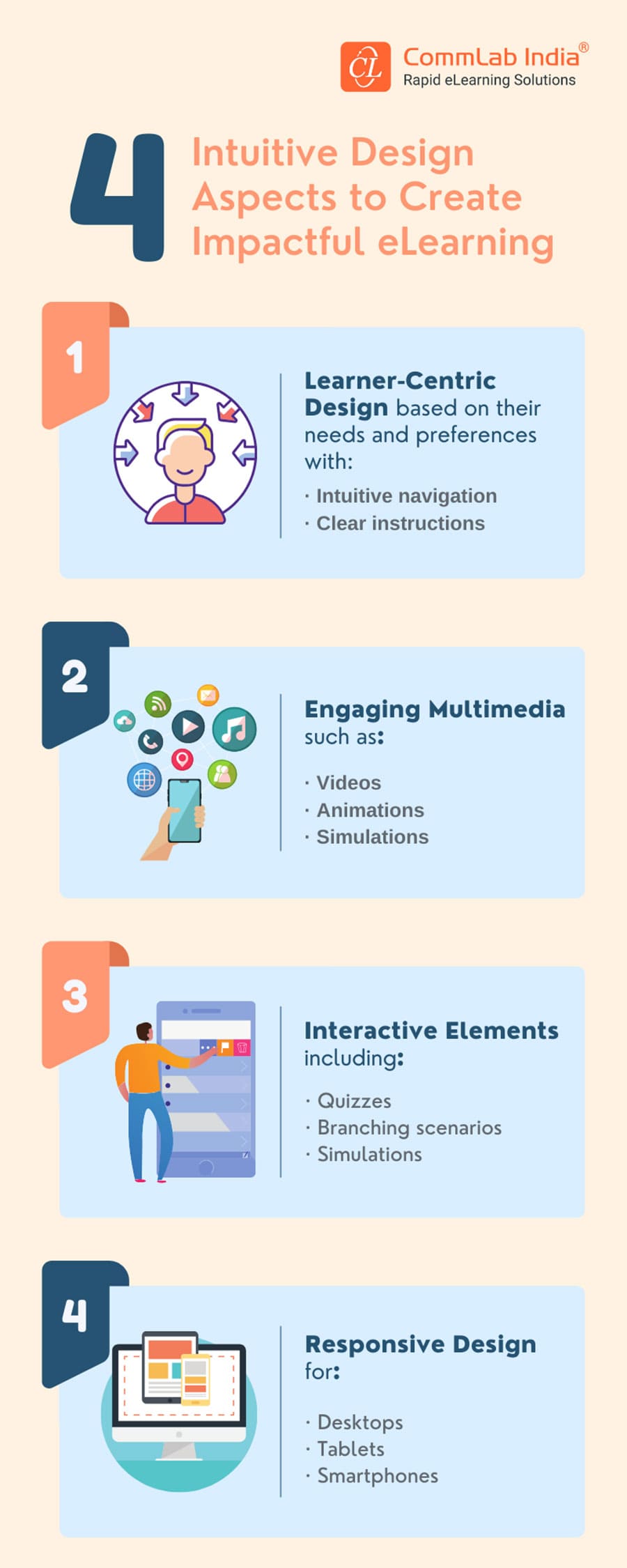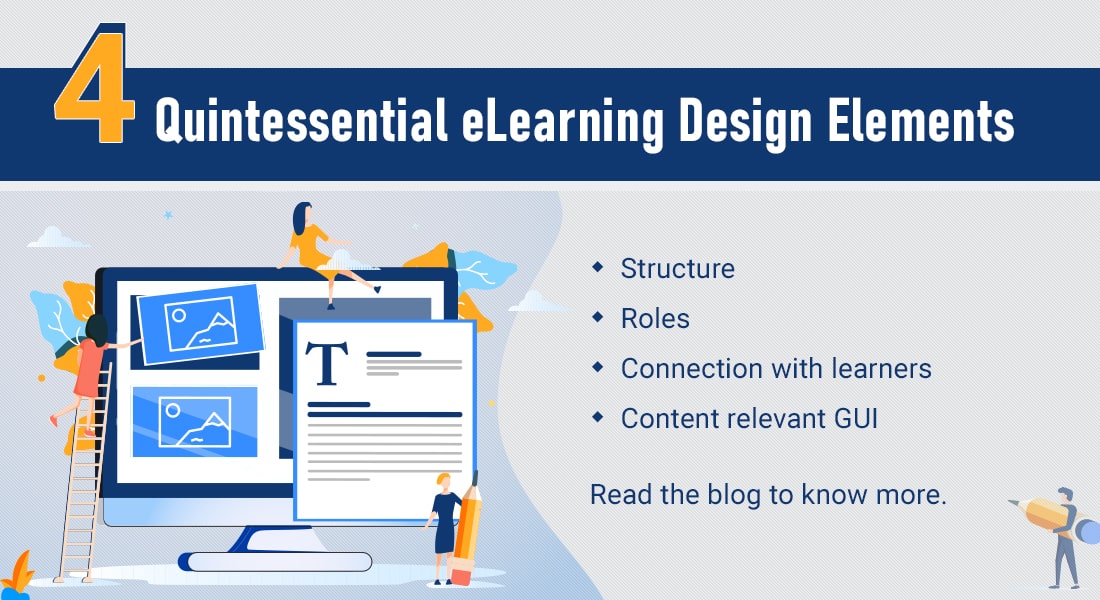What are the Intuitive Design Aspects for Impactful eLearning? [Infographic]
![What are the Intuitive Design Aspects for Impactful eLearning? [Infographic] What are the Intuitive Design Aspects for Impactful eLearning? [Infographic]](https://blog.commlabindia.com/hubfs/blogs/intuitive-design-aspects-impactful-elearning-info.jpg)
The world's a busy place, and learning new skills is more important than ever. But how can organizations ensure effective, engaging, and accessible learning for employees? Well, this is where eLearning comes in. It is flexible, convenient, and allows the learners to learn at their own pace. But have you ever finished an eLearning course feeling more confused than informed? We've all been there! Luckily, there's a secret element that helps turn eLearning from frustrating to fantastic. Wondering what it is? It’s intuitive design.
In this blog, we’ll learn more about the challenges learners face due to the poor design of eLearning courses and intuitive design aspects to stir things up and create impactful eLearning.
Without further ado, let’s start!
Learner Challenges with Poor eLearning Design
Poorly designed eLearning courses can have a negative impact on learner efficiency and training ROI. Here’s how:
Confusing Navigation
Think about the learners getting lost in a maze of menus and buttons. Sad, isn’t it? Well, poorly designed navigation makes it difficult for the learners to find the information they need. This leads to frustration and time waste.
→ Download Now: Instructional Design Strategies to Design Engaging eLearning Courses
Information Overload
You may feel like your employees need to know it all, but learning to chunk what is really necessary for them is the name of the game. Providing all sorts of information can confuse the learners. In fact, courses with dense information blocks and a lack of clear structure can leave learners overwhelmed and unable to retain key points.
Unengaging Content
When the lengthy eLearning courses are nothing but text, it can be pretty difficult for learners to beat boredom and stay focused. Without multimedia elements like images, videos, and interactive activities, learners lose focus and struggle to stay motivated.
Lack of Connection
Effective learning often involves feeling connected to the learning material. It can be through interactive elements like click-throughs, hotspots, drag-and-drops, etc., and personalization. Training courses that lack elements of storytelling, personalization, and clear communication leave learners feeling isolated and uninspired.
Ineffective Assessments
Are your eLearning assessments just a test of memorization or do they truly measure understanding of learners? Ineffective assessments can be discouraging as they fail to gauge the understanding and application of concepts among the learners. Moreover, they don't even contribute in providing the feedback that helps learners improve.
4 Intuitive Design Aspects to Create Impactful eLearning
Wrapping It Up!
Intuitive design is an important aspect that makes learning clear, enjoyable, and most importantly, impactful. Remember, learners crave a clear path, engaging content, and a sense of connection. So when you prioritize intuitive design, you create impactful eLearning experiences that keep learners motivated and boost knowledge retention. In fact, they enable learners to achieve their learning goals. It’s a win-win for both organizations and learners. Instructional design strategies play an integral role in helping you create impactful eLearning. Learn more in the eBook below.






![What Makes eLearning a Breeze? The Magic of Intuitive Learning! [Infographic]](https://blog.commlabindia.com/hubfs/blogs/intuitive-elearning-design-elements-infographic.png)
